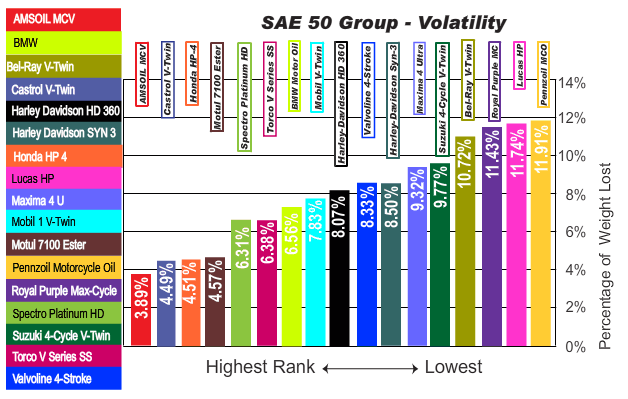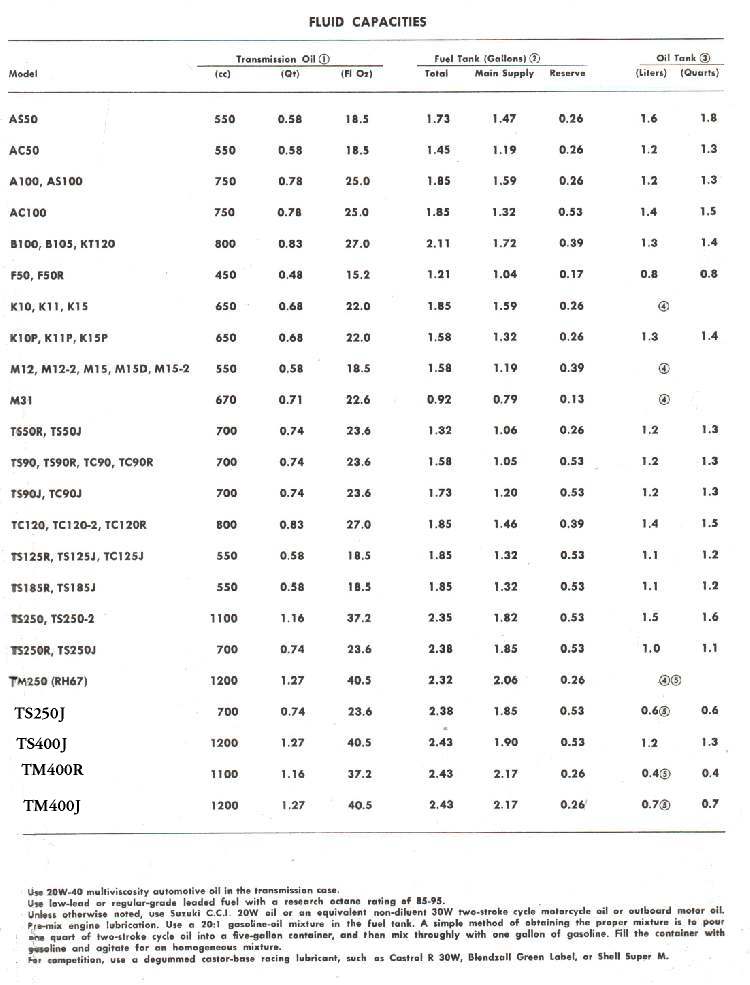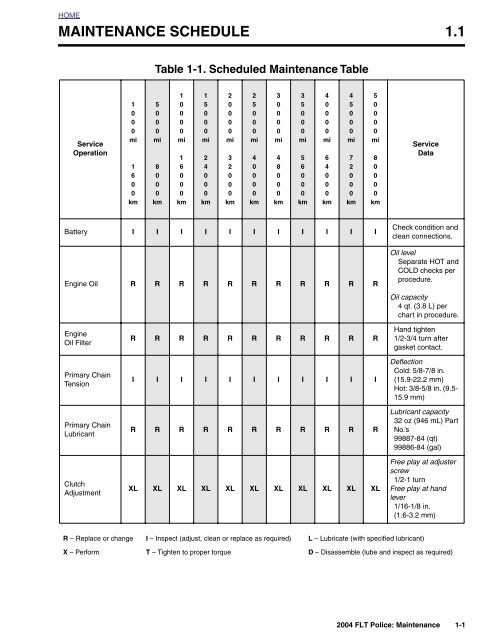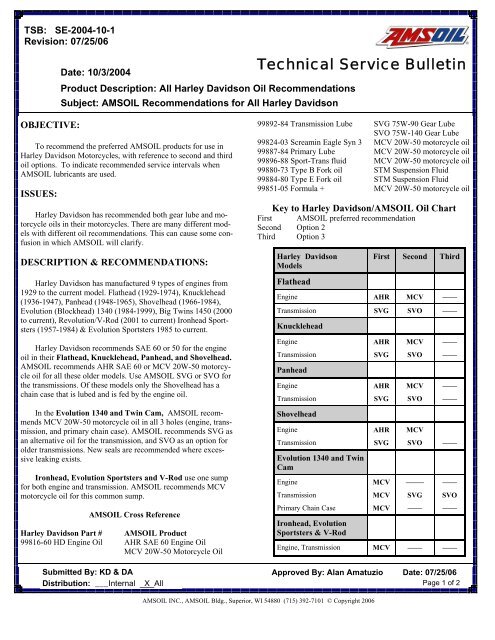The Harley Davidson fluid capacity chart provides detailed information on the required fluid volumes for various models. This chart helps owners maintain their bikes effectively.
Harley Davidson motorcycles are known for their durability and performance. Proper maintenance is crucial for these bikes to perform at their best. One important aspect of maintenance is ensuring the correct fluid levels. The fluid capacity chart specifies the required volumes for engine oil, transmission fluid, and primary chain case fluid.
This information is essential for both routine maintenance and troubleshooting. Accurate fluid levels help prevent mechanical issues and extend the bike’s lifespan. Harley Davidson owners should refer to this chart regularly to keep their motorcycles in optimal condition.
Introduction To Harley Davidson Fluid Maintenance
Maintaining your Harley Davidson involves more than just a casual check. Ensuring proper fluid levels is crucial for performance and longevity. Harley Davidson fluid maintenance ensures your bike runs smoothly and safely.
Importance Of Correct Fluid Levels
Maintaining correct fluid levels in your Harley Davidson is vital. It prevents engine wear and overheating. Incorrect fluid levels can lead to serious mechanical issues. Proper fluid maintenance extends the life of your motorcycle.
- Engine Oil: Essential for lubricating engine parts.
- Transmission Fluid: Ensures smooth gear shifting.
- Brake Fluid: Vital for effective braking.
- Coolant: Prevents the engine from overheating.
Periodic Maintenance Schedule
Following a periodic maintenance schedule helps keep your Harley in peak condition. Regular checks and replacements are necessary.
| Fluid Type | Maintenance Interval |
|---|---|
| Engine Oil | Every 5,000 miles |
| Transmission Fluid | Every 10,000 miles |
| Brake Fluid | Every 2 years |
| Coolant | Every 2 years |
Keeping a routine ensures your Harley Davidson remains reliable and safe. Always refer to the owner’s manual for specific guidelines.
Engine Oil Fundamentals
Understanding engine oil fundamentals is crucial for your Harley Davidson. Proper engine oil ensures your bike runs smoothly and stays reliable. Let’s dive into the essentials.
Types Of Engine Oil
There are three main types of engine oil:
- Conventional Oil: Basic oil, affordable but requires frequent changes.
- Synthetic Oil: Offers better protection, ideal for extreme conditions.
- Blended Oil: A mix of conventional and synthetic, providing balanced performance.
Choosing The Right Viscosity
Viscosity measures the thickness of the oil. It affects engine performance. The right viscosity ensures smooth operation and optimal protection.
Harley Davidson recommends specific viscosities for different models. Check your owner’s manual for the exact viscosity.
| Model | Recommended Viscosity |
|---|---|
| Softail | 20W-50 |
| Sportster | 10W-40 |
| Touring | 20W-50 |
Always follow the manufacturer’s recommendations. This ensures your engine stays in top condition.
Transmission Fluid Insights
Understanding the transmission fluid in your Harley Davidson is crucial. It ensures smooth gear shifts and optimal performance. This section delves into the role of transmission fluid, signs of wear, and when to replace it.
Role In Performance
The transmission fluid plays a vital role in your bike’s performance. It lubricates the transmission parts, reducing friction. This leads to smoother gear shifts and less wear. The fluid also helps to cool the transmission, preventing overheating. Keeping the fluid at the right level ensures optimal performance.
Here’s a quick look at its key roles:
- Lubrication: Reduces friction between moving parts.
- Cooling: Helps in dissipating heat.
- Cleaning: Removes debris and contaminants.
Signs Of Wear And Replacement
Over time, transmission fluid can degrade. Regular checks are essential. Look out for these signs of wear:
- Grinding noises during gear shifts.
- Delayed gear engagement.
- Discolored or burnt-smelling fluid.
If you notice these signs, it’s time for a replacement. Always refer to the Harley Davidson fluid capacity chart for accurate information.
Here’s a quick reference table for common Harley models:
| Model | Transmission Fluid Capacity (quarts) |
|---|---|
| Sportster | 1.0 |
| Softail | 1.0 |
| Touring | 1.0-1.5 |
Regular maintenance and timely fluid changes keep your Harley running smoothly. Always use the recommended fluid type for your model.
Primary Chaincase Lubrication
The primary chaincase is crucial for Harley Davidson motorcycles. It houses the primary chain and clutch. Proper lubrication is essential for smooth performance.
Function Of Chaincase Fluid
Chaincase fluid lubricates the primary chain and clutch. It reduces friction and wear. It also helps dissipate heat.
- Lubricates the primary chain
- Reduces friction and wear
- Dissipates heat
When To Change Chaincase Fluid
Change the chaincase fluid at regular intervals. This ensures optimal performance. Check your Harley Davidson manual for specific intervals.
Here is a quick reference table:
| Mileage | Change Frequency |
|---|---|
| Every 5,000 miles | Change the chaincase fluid |
| Every 10,000 miles | Inspect and top off fluid |
- Check the fluid level regularly.
- Top off if needed.
- Change completely every 5,000 miles.
Using the right fluid type is crucial. Always refer to the manufacturer’s recommendations.
Coolant For Liquid-cooled Engines
Maintaining the coolant in your Harley Davidson’s liquid-cooled engine is vital. The coolant helps regulate the engine’s temperature. Proper coolant ensures your motorcycle runs smoothly and efficiently.
Coolant Types And Properties
Different types of coolants are available. Each type has specific properties.
- Ethylene Glycol-based Coolants: Common and effective. Suitable for colder climates.
- Propylene Glycol-based Coolants: Environmentally friendly. Less toxic.
- Hybrid Organic Acid Technology (HOAT) Coolants: Combines organic and inorganic acids. Longer lifespan.
Ethylene glycol coolants have a high boiling point. They protect against freezing and boiling. Propylene glycol coolants are safer for the environment. HOAT coolants offer better corrosion protection.
Coolant Change Intervals
Changing your coolant regularly is important. Follow the manufacturer’s guidelines.
| Coolant Type | Change Interval |
|---|---|
| Ethylene Glycol | Every 2 years or 24,000 miles |
| Propylene Glycol | Every 3 years or 36,000 miles |
| HOAT Coolant | Every 5 years or 60,000 miles |
Regularly check the coolant levels. Top up if necessary. Use the specified coolant for your Harley Davidson.
Brake Fluid Essentials
Understanding the brake fluid in your Harley Davidson is crucial. It ensures your safety on the road. Knowing the fluid capacity and type is essential for maintenance. This guide covers the basics and helps you keep your bike in top condition.
Dot Ratings Explained
Brake fluids are classified by DOT ratings. These ratings indicate the boiling point and performance. Here are the common DOT types:
- DOT 3: Most common, suitable for everyday use.
- DOT 4: Higher boiling point, better for high-performance bikes.
- DOT 5: Silicone-based, non-absorbent, and used in specialized situations.
- DOT 5.1: Similar to DOT 4 but with a higher boiling point.
Each type has its advantages and specific use cases. Always check your bike’s manual for the recommended DOT rating.
Brake Fluid Change Frequency
Regularly changing the brake fluid is vital for safety. For most Harley Davidson models, change the fluid every two years. Always use the recommended type for your bike.
Here is a quick reference table:
| Fluid Type | Change Frequency |
|---|---|
| DOT 3 | Every 2 years |
| DOT 4 | Every 2 years |
| DOT 5 | As needed, based on use |
| DOT 5.1 | Every 2 years |
Keep a log of your brake fluid changes. This helps you stay on track with maintenance. Clean and fresh brake fluid ensures optimal braking performance.
Fork Oil: An Overlooked Element
Many Harley Davidson owners often overlook the significance of fork oil. This vital fluid plays a crucial role in the bike’s performance and safety. Fork oil ensures smooth suspension and enhances ride quality. Understanding its importance and knowing the signs of deterioration can save you from potential hazards.
Importance Of Fork Oil
Fork oil is essential for your Harley Davidson’s front suspension. It absorbs shocks and maintains stability during rides. Without proper fork oil, the bike’s handling can become unpredictable. This can lead to a rough and uncomfortable ride. Regular maintenance of fork oil ensures your suspension system functions correctly. This enhances your bike’s overall performance and safety.
Symptoms Of Fork Oil Deterioration
Fork oil can deteriorate over time. Recognizing the symptoms can help you take timely action. Here are some common signs:
- Leaking fork seals: Oil puddles around the fork area.
- Reduced damping: The suspension feels bouncy or unresponsive.
- Increased fork dive: The front end dips excessively during braking.
- Unusual noises: Clicking or clunking sounds from the front suspension.
Regularly check your fork oil level and condition. Replacing old or contaminated fork oil can restore your bike’s smooth handling. For specific fluid capacities, refer to the Harley Davidson Fluid Capacity Chart. This ensures you use the correct amount and type of oil for your model.

Credit: www.syntheticoilhq.com
Creating Your Fluid Capacity Chart
Creating a fluid capacity chart for your Harley Davidson helps in maintaining your bike. You can avoid overfills or underfills which can harm your bike. This guide will show you how to gather data and read the chart.
Gathering Data For Your Model
First, you need to gather data specific to your Harley Davidson model. Check your bike’s manual for the exact fluid capacities. You can also visit Harley Davidson’s official website for detailed information.
Here is a simple table to help you keep track:
| Fluid Type | Capacity (quarts) |
|---|---|
| Engine Oil | 3.5 |
| Transmission Fluid | 1.0 |
| Primary Fluid | 1.5 |
Make sure you have a pen and paper ready to jot down these values. It’s also helpful to take a photo of the chart for quick reference.
How To Read The Chart
Reading the fluid capacity chart is simple. The chart lists different fluid types and their capacities.
- Engine Oil: This is the most critical fluid. Ensure you fill it up to the specified capacity.
- Transmission Fluid: This fluid keeps your gears running smoothly. Don’t overfill it.
- Primary Fluid: This fluid is essential for the clutch. Check it regularly.
Use the table to check each fluid type and its required capacity. Always use the recommended fluids for your model.
Keeping a well-maintained fluid capacity chart ensures the longevity and performance of your Harley Davidson. Regularly update your chart and consult your manual for any changes.
Best Practices For Fluid Management
Managing the fluids in your Harley Davidson is crucial. Proper fluid management ensures optimal performance and longevity. This guide provides best practices for fluid management, including tips for DIY maintenance and professional service recommendations.
Tips For Diy Maintenance
DIY maintenance can save you money and time. Always follow the manufacturer’s guidelines. Regularly check and change the oil, brake fluid, and coolant. Use the Harley Davidson fluid capacity chart for accurate measurements.
- Oil Changes: Use high-quality oil. Change it every 3,000 miles.
- Brake Fluid: Check the brake fluid level monthly. Top it up if needed.
- Coolant: Inspect the coolant level before long rides. Refill if low.
Use a clean workspace. Avoid contamination of fluids. Always wear gloves and safety glasses.
Professional Service Recommendations
For complex tasks, seek professional help. Certified mechanics have the skills and tools. They ensure proper fluid management.
- Scheduled Maintenance: Follow the service schedule. It keeps your bike in top shape.
- Diagnostic Services: Professionals can detect issues early. They prevent major problems.
- Fluid Flushes: Regular flushes are essential. Professionals do it right.
Professional services might cost more. But they provide peace of mind and safety.
| Fluid Type | Capacity |
|---|---|
| Engine Oil | 3.5 quarts |
| Brake Fluid | 0.5 quarts |
| Coolant | 2.0 quarts |
Use this table to reference fluid capacities. Always double-check your bike’s manual.

Credit: www.dansmc.com
Troubleshooting Fluid-related Issues
Understanding the Harley Davidson Fluid Capacity Chart is essential for maintaining your bike. Fluid-related issues can cause significant problems if not addressed promptly. This section will guide you through common fluid problems and when to seek expert help.
Common Fluid Problems
Motorcycles can face various fluid-related issues. Identifying them early can save you from bigger problems. Here are some common issues:
- Oil Leaks: Oil leaks can damage engine parts. Check for oil spots under your bike.
- Low Oil Levels: Low oil can lead to engine overheating. Use the fluid capacity chart to check levels.
- Coolant Leaks: Coolant leaks can cause engine overheating. Inspect hoses and connections regularly.
- Brake Fluid Issues: Low brake fluid can affect braking performance. Check the fluid reservoir often.
Regular checks can prevent these common issues. Always refer to the fluid capacity chart for accurate measurements.
When To Seek Expert Help
Some problems need professional attention. Knowing when to seek expert help is crucial for your bike’s longevity.
- Persistent Leaks: If you notice continuous leaks, consult a professional mechanic.
- Unusual Noises: Strange noises from the engine can indicate fluid issues. Get it checked immediately.
- Overheating: Frequent overheating despite proper fluid levels needs expert diagnosis.
- Brake Failure: If your brakes feel spongy or unresponsive, seek professional help.
Experts have the tools and knowledge to address complex fluid issues. Don’t hesitate to reach out for help.
| Fluid Type | Common Problems | Expert Help Needed |
|---|---|---|
| Oil | Leaks, Low Levels | Persistent Leaks, Unusual Noises |
| Coolant | Leaks, Overheating | Frequent Overheating |
| Brake Fluid | Low Levels | Brake Failure |
Following the Harley Davidson Fluid Capacity Chart can help you maintain your bike. Regular checks and knowing when to seek help can ensure a smooth ride.
Environmental Considerations
Maintaining your Harley Davidson is vital. It includes managing its fluid capacities responsibly. Environmental considerations are crucial. Proper disposal and eco-friendly fluid options help protect our planet.
Proper Disposal Of Used Fluids
Used fluids from your Harley can harm the environment. Always dispose of them correctly. Follow local regulations for fluid disposal.
Here is a simple guide to help you:
- Engine Oil: Take to a recycling center or auto parts store.
- Transmission Fluid: Use designated disposal facilities.
- Brake Fluid: Never pour it down drains or into the soil. Use a hazardous waste disposal service.
- Coolant: Recycle it at a local auto shop or recycling center.
Proper disposal protects water sources and wildlife. It keeps harmful chemicals out of the environment.
Eco-friendly Fluid Options
Choose eco-friendly fluids for your Harley Davidson. These options reduce environmental impact.
Consider these green choices:
- Biodegradable Engine Oil: It breaks down faster and is less toxic.
- Recycled Coolants: They are reused and reduce waste.
- Low Tox Brake Fluids: They are safer for the environment.
- Eco-Friendly Transmission Fluids: They have fewer harmful chemicals.
Switching to eco-friendly fluids is easy. It helps keep our planet healthy.

Credit: www.yumpu.com
Conclusion: Ensuring Longevity And Performance
Maintaining your Harley Davidson’s fluid levels is crucial. Proper fluid management ensures your bike runs smoothly. It also extends its lifespan. Understanding the fluid capacity chart helps you avoid overfilling or underfilling. Let’s summarize the key points and encourage routine check-ups.
Summarizing Key Takeaways
Here are the main points to remember:
- Check your bike’s fluid levels regularly.
- Use the correct type of fluid for each part.
- Follow the manufacturer’s recommendations for fluid capacities.
| Fluid Type | Capacity |
|---|---|
| Engine Oil | 3.5 Quarts |
| Transmission Fluid | 1 Quart |
| Primary Chaincase Fluid | 1 Quart |
Encouraging Routine Check-ups
Regular check-ups are essential for your bike’s health. They help you spot issues early. Routine maintenance prevents costly repairs. Schedule check-ups every few months. Keep a record of each check-up.
Here’s a simple checklist for your routine check-ups:
- Check engine oil level and quality.
- Inspect transmission fluid.
- Examine primary chaincase fluid.
- Look for any leaks or unusual noises.
By following these guidelines, you ensure your Harley Davidson stays in top shape. Always use the fluid capacity chart as your guide. Take care of your bike, and it will take care of you.
Conclusion
Understanding the Harley Davidson fluid capacity chart ensures your bike runs smoothly and efficiently. Regular maintenance prevents costly repairs. Keep this guide handy for quick reference. Proper fluid levels enhance performance and longevity. Thank you for reading, and enjoy a safe ride on your Harley Davidson.

